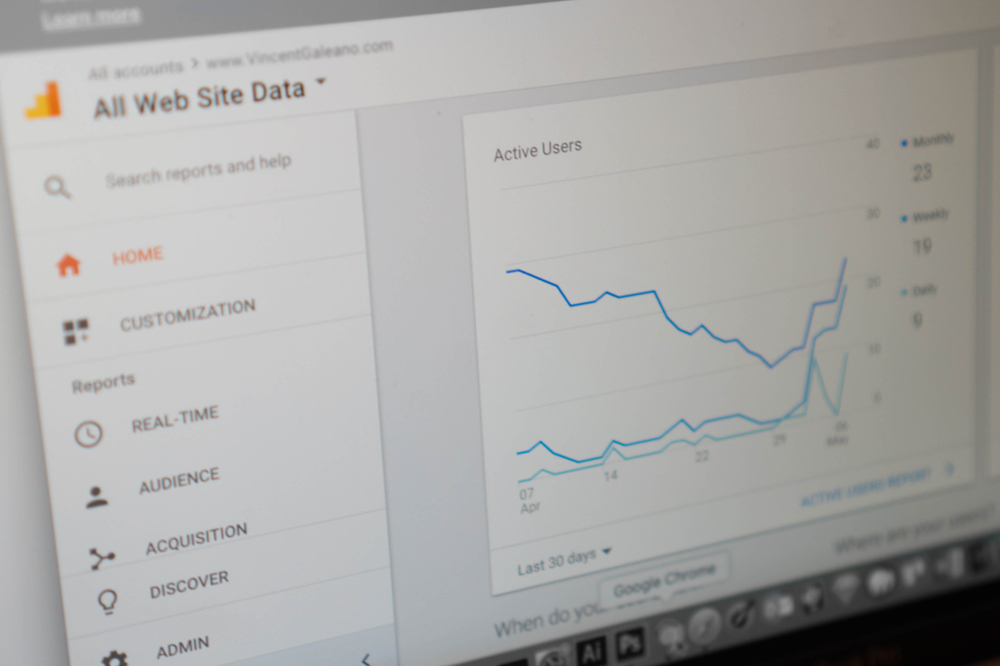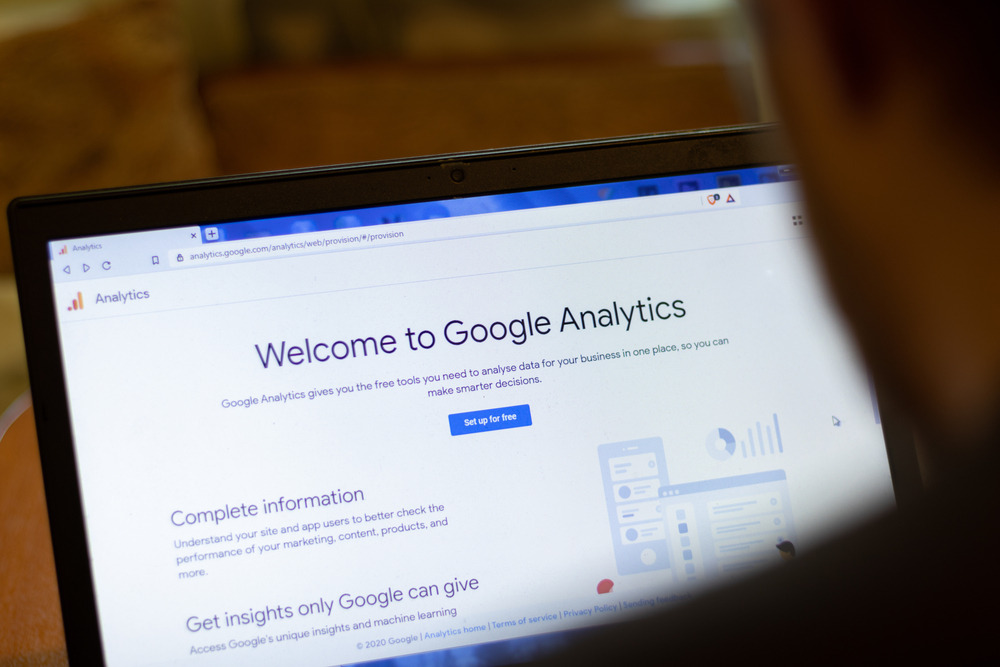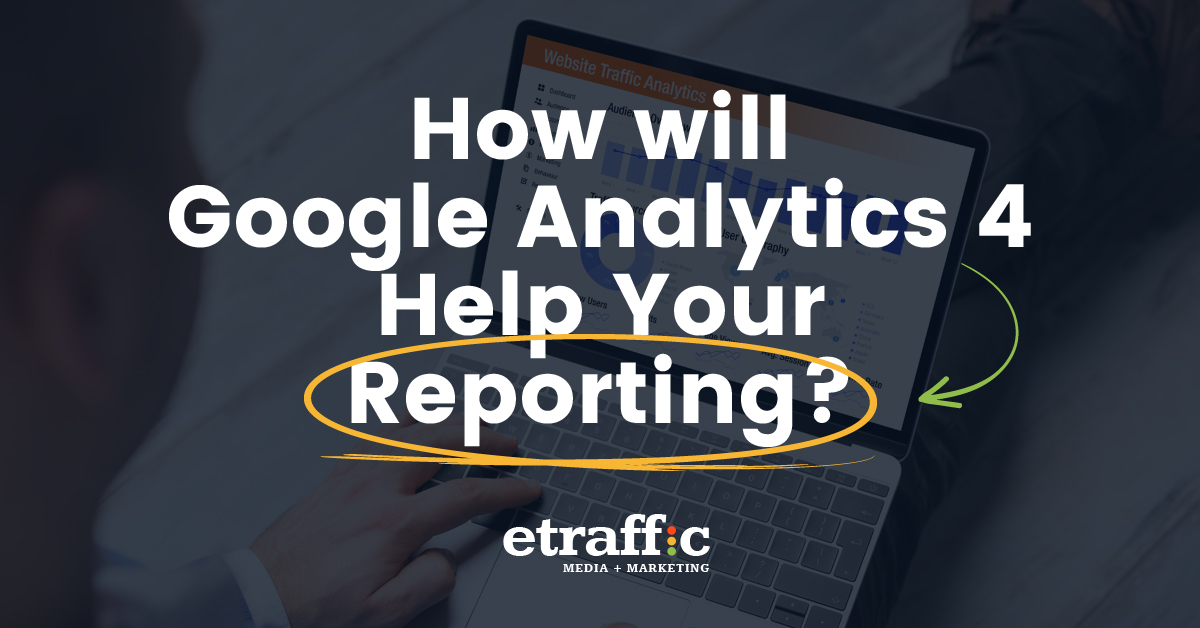Since the release of the first version of Google Analytics, it has been the standard software for marketers looking to track the performance of their website. Google released Google Analytics 4 (GA4) back in 2019 as a beta software name Web + App.
Most importantly for us as marketers, Google intends to replace the current Universal Analytics (UA) with GA4 and will turn off UA on July 1, 2023. With the above in mind, it is important to learn more about GA4, understand the differences between GA4 and UA, and, importantly, create GA4 properties for your web assets.
Difference Between Google Analytics 4 And Standard Google Analytics Tracking
- GA4 Uses Event-Based Measurement Model Compared To UA’s Session-Based Measurement Model – GA4 is moving away from the session-based measurement models to an event-based measurement model. As such, GA4 does not have the Categories, Action and Label structure that UA uses. The shift to an event-based model will introduce greater flexibility in traffic analysis. For instance, Analytics users can track a wide range of events and attach custom parameters. As such, marketers can custom set up GA4 depending on their specific needs. Additionally, GA4 measures a wider range of events including Scroll, Session Start, and Page View without the need for additional coding.

- Updated Interface And Reporting – While the interface you get with GA4 has gone through a refresh and updating phase, it still has a familiar look and feel. However, reporting updates that GA4 has are in the form of the new reporting Customer Lifecycle reports such as Analysis, Acquisition, Retention, Engagement, and Monetisation. It’s important to note that all aspects of reporting will fall under properties. As such, marketers will control everything from the Property Level, which consolidates cross-platform data from mobile apps and websites into one report.
- New Insights Generated By Artificial Intelligence – Aside from new forms and types of reports, GA4 is also integrated with Google’s AI. The integration with AI is intended to give users new insights and answers by providing more streamlined reporting. In the past, Analytics users had to create/use a myriad of filters to find insights. The AI integration promises to provide users with insights in a rather straightforward manner. For instance, in GA4 you can ask the AI how many people from Melbourne, Australia visited the homepage of your site between 6 pm. and 10 pm. In the standard analytics, users had to use filters to unearth such data.
- Cross-Functionality And Cross-Device – The genesis of Google Analytics 4 is the Web + App Property, a beta analytics app released in 2019 that combined the tracking and measuring the engagement on website traffic (Google Analytics) and app (Google Analytics for Firebase) traffic. GA4 can collect and connect data streams from multiple channels and devices. Consequently, GA4 is better placed to measure user journey, giving marketers a clearer picture of where customers are in the sales funnel.
- More Focus On User Privacy – The industry trend in the tech space is to enhance privacy. With this consideration, GA4 is designed and built from the ground up to be more privacy-conscious. For instance, GA4 is reducing its reliance on tracking cookies to measure traffic on websites (and apps). Instead, GA4 leverage powerful AI and Google Signals to create a complete picture of user behaviour on websites and apps. Additionally, unlike Universal Analytics which allows the Analytics server to store event-level data for a maximum of 50 months, Google Analytics will only allow users to store user-level data for a maximum of 14 months.
- Account Setup In GA4 Differs From What You Used To In UA – GA4 is moving away from the familiar tracking ID with the UA-XX structure to a G-XX structure. Updating to the new tacking ID structure is relatively straightforward for websites that implement Analytics by placing the Analytics code on their site. However, websites that use Google Tag Manager will have to set up GA4 using GA4 tags. On the hand, if you’ve been using custom event tracking on your website, you’ll have to update your setup. The process of setting up custom event parameters, which uses “event name” is markedly different from what you’ve been used to with UA, which uses labels such as actions, labels, and categories.
- Additional Engagement Measurement Comes As Standard – While UA’s Google Tag Manager made it easier to set up tacking of additional engagement, Analytics users had to perform extensive configurations. However, measuring additional user engagement in GA4 is as simple as toggling on the requisite options. Essentially GA4 gets rid of the complex implementation that is necessary with Standard Analytics Tracking.
How Does GA 4 Impact Marketing Analytics?

- GA4 Introduces New Marketing Standards – With the tech world moving away from cookies, Google is introducing GA4 as a marketing analytics solution for the future. As such, the new Google Analytics relies less on cookies tracking and measuring traffic. A future free of third-party tracking cookies will improve privacy across the internet, all without marketers experiencing diminished tracking capabilities.
- Marketers Will Get More Analytics Capabilities – Google Analytics 4 comes with new capabilities such as AI integration and machine learning capabilities. These new features will allow marketers to better understand traffic to their web assets, which, in turn, will potentially improve their financial performance. Enhanced measurement such as Scrolls, outbound clicks, video engagement, and much more come as standard. This means marketers will have an easier time setting up their analytics accounts and get much more out of the standard analytics.
Why You Should Create A New Google Analytics 4 Property Immediately
- Futureproof Your Analytics – On July 1, 2023, Universal Analytics will stop processing new hits. Consequently, if you rely on the Google Analytics solution to measure traffic to your site, you’ll need to upgrade to GA4. Additionally, you should note that GA4 will not access data collected by UA. GA4 will only use the data it has accumulated to perform analyses such as the year-over-year analysis. Keep in mind that the more data you have the better and more accurate your analysis is, so you should create a new GA4 property ASAP.
- GA4 Provides Website Owners With Predictive Modelling – Another reason you should create a GA4 property is to take advantage of its new predictive modelling feature. This feature is especially beneficial for e-commerce sites that need insights into future revenue and transactions such as sales, purchases, and churn. Collecting an ample amount of data early on will improve the quality of data generated by the predictive model in the future.
- Enjoy Faster Reporting – While we’ve grown used to UA and the reporting it offers, GA4 has been redesigned to offer faster reporting and better meet the needs of marketers. For instance, the reporting interface is sprinkled with the main metrics that many marketers are looking for. Additionally, GA4 reports more reports such as Analysis, Acquisition, Retention, Engagement, and Monetisation out of the box. GA4 displays these reports in overview cards, allowing marketers to view the performance of their website at a glance.
- GA4 Makes Multi-Channel Analytics Possible – If your company operates a website and application, you can perform analytics measurement through one platform – the GA4. The multi-channel analytics capabilities help companies track and measure the traffic emanating from your website, your iOS app, your Android app, and much more. Consequently, you gain a complete picture of how individuals visit, use, and travel through your online assets.
Final thoughts
While the Universal Analytics sunsetting period seems far away enough to not have to worry about immediately creating a GA4 property, there are plenty of advantages to setting up your analytics for the GA4 future. The longer you wait, the harder a smooth transition to GA4 becomes. So, take the plunge and create your GA4 properties today.
Switch To Google Analytics 4 With ETRAFFIC
The future of analytics is here with us. It’s time to switch to new capabilities. ETRAFFIC is here to help you set up the Google Analytics 4 for your website and/or applications. Our Analytics Team has the requisite experience and technical knowledge to help you set up and optimise Google analytics to help you track, measure, and, more importantly, understand your traffic. We can help improve your marketing efforts and ultimately, your bottom line with the new GA4.
TALK TO US
![]() Posted by Cameron Francis
on
29 Apr , 2022
in
Digital Marketing SEO Tips
Posted by Cameron Francis
on
29 Apr , 2022
in
Digital Marketing SEO Tips


